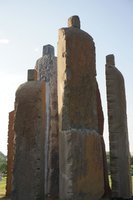I'm very very surprised that you people actually want to read through my tutorial over all the amazing, very professional tutorials. Anyhow, here goes.
1. I usually copy paste the files into my photographs folder. I love my folder structure, plus this allows me to separate casual pics (family, friends, events) from the so called artistic ones. Usually casual pics are shot in jpeg while I am making an effort to shoot the more art oriented ones in Raw + jpeg
2. I do all my post processing in Lightroom and have picasa only for the purposes of indexing files. Picasa is awesome for sorting images by date and going through them quickly.
3. I have usually apply a set of keywords and copyright stuff during import. For copyright stuff, author name and email and all I've made a preset. Shown on the right under the "apply during import". This way these basic things get applied to all the images that I import.
*i.imgur.com/ufmurbW.jpg
4. Now comes the hard part, choosing which image you are going to waste time post processing

. If you have a bunch of similar images it helps to use the "compare tool" just hit "c" to use this. It allows you to compare two images side by side.
*i.imgur.com/YAYmwm2.jpg
5. I usually start developing an image by moving the histogram. In this case I mostly pushed the "exposure" (the middle part of the histogram) toward to right to make the image brighter. This image requires a HDR so I also push in some of the details lost in the shadows and highlights.
6. I increase the temperature slightly to give it that orange sunset feel (people seem to find warmer tones more nostalgic and emotional). I also increase the clarity, vibrance and saturation, this adds quite a lot of pop to the image but has to be used with caution so that it does not make the image unnatural.
7. I also fix the any tilt of the image or crop out unwanted stuff using the cropping tool
*i.imgur.com/c9IYQYZ.jpg
8. next is the tone curve, I'm not really a fan of this unless you want some high contrast images (like black and white art shots). If that is the case I'll make it into an S shape, however for this image I've made the S very very slight.
*i.imgur.com/gQZ9hmX.jpg
9. HSL is another amazing tab that allows you to change the saturation or luminescence (brightness) on a color by color basis. Not touching it here but you can always increase the saturation of the orange.
*i.imgur.com/c9IYQYZ.jpg
10. Since I'm editing out a raw file I need to apply some amount of noise reduction, which is under the detail tab. Need to read up on what all these are I mostly end up applying the luminance noise reduction and at times the color one.
*i.imgur.com/IGxd5md.jpg
11. Finally, since the sony lenses have a large amount of distortion and vignetting (which jpeg automatically corrects) I apply the lens profile correction.
*i.imgur.com/AHaKoB2.jpg
12. voila! I tend to hit "y" multiple times during the process to compare the original and post processed images side by side.
*i.imgur.com/kn3vZb5.jpg
13. My final step is file>export where i resize it if needed and export this as a jpeg.
In case any of you want to post process and compare the Raw vs Jpeg file for this image you can get it here. Should be pretty useful if you just want to give my workflow a try.
Sunset pics for tutorial.zip - GigaSize.com: Host and Share your files

